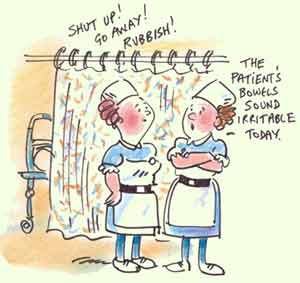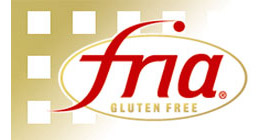|
|
| The Many Faces of IBS - and food intolerance - 2006 |
|
Margaret Moss is a nutritionist who
has practised for many years in Stockport where she has successfully
treated several
Foods Matter readers suffering from food intolerance. |
|
Irritable bowel syndrome is a label
given to different digestive problems that have not been shown
to have specific diagnoses
like cancer, Crohn’s Disease or ulcerative colitis. There are
various reasons why digestion may not function well, and treatment
should depend on why there is a problem. The Problem - Grumpy, Aching - and Diarrhoea!
I asked if she had pressure in her head. Oh yes, she said. How did you think
of that? Her doctor had considered she might have a brain tumour, but luckily
she did not. If you wish to contact Margaret she
is to be found at
Click here for more articles on the management IBS |
If you found this article interesting, you will find many more general articles and research reports on coeliac disease here, and lots of information on the management of coeliac disease here.
You can also find articles and research reports on gluten intolerance here and articles on a wide range of other digestive conditions here.
For hundreds of gluten free foods see our freefrom food section here, and for nearly 800 gluten-free recipes see here.
And if you would like to get our FREE fortnightly e-newsletter with new products, recipes, articles and all the latest news from the allergy and freefrom world, just sign up here.









